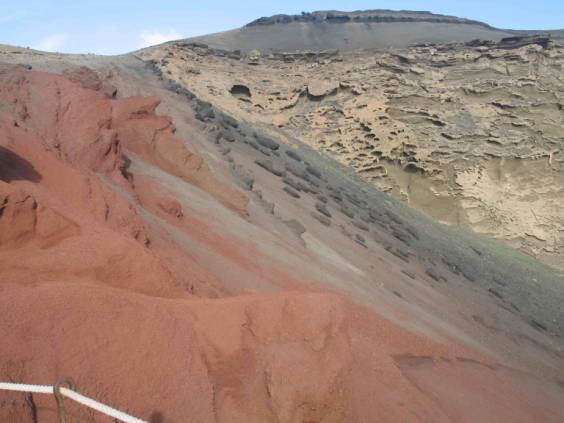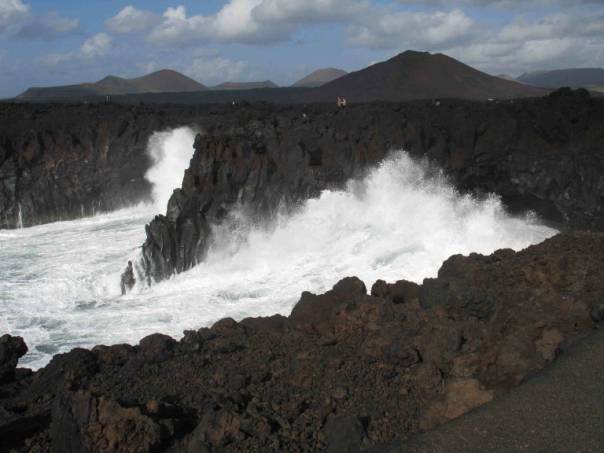Measurable temporal changes of gravity and deformations of earth's surface are indicators of dynamic processes inside the earth, such as those associated with movements of magma and volcanic eruptions. The observation, analysis and interpretation of surface gravity changes and vertical displacements contribute to understanding the physics of magma reservoirs and the processes associated with volcanic activity such as eruptions.
Active volcanism is experienced all over the globe. Millions of people live in a close vicinity of active volcanoes that pose a real threat to human lives. Understanding the processes leading to eruptions, hazard assessment, mitigation, and early warning leading to evacuation of inhabitants are vital. The precursors to an eruption are very complex and depend on many conditions that may be respective to the given region or the given volcano. The study of temporal gravity changes and vertical displacements of the surface plays an important role in getting to know the volcanic processes associated with a given volcano.
Colleagues from our Department of Gravimetry and Geodynamics, Dr. Brimich and Dr. Vajda have participated in developing the methods of interpreting observed gravity changes. They have performed modelling using point sources of heat and pressure to understand the changes linked with magma processes inside a volcano. Also the TFM methodology was tested for its potential in interpreting gravity changes. Case studies were performed for two volcanoes, Mayon in Philippines and Merapi in Indonesia. This research was carried out within international cooperation with Dr. Fernández of the Institute of Astronomy and Geodesy, CSIC-UCM, Madrid, Spain, and Dr. Jentzsch with colleagues of the Institute of Geosciences, FSU Jena, Germany. Gravity changes must be measured very accurately using precise gravimetric procedures. In addition vertical displacement of gravity points, coming from precise GPS measurements, must be observed. For our study we used data, provided to us by Dr. Jentzsch and his colleagues, measured at volcanoes Mayon and Merapi in several campaigns.
References related to this research:
Vajda, P., Brimich, L., Jentzsch, G., Jahr, T., and Weise, A. "Interpreting temporal changes of gravity at Mayon using the TFM: preliminary results." Workshop "Time-variable deformation and gravity fields: theory, observations, and modelling." Casa de los Volcanes, Lanzarote, Canary Islands, Spain, February 18-21, 2003 ,(oral presentation)
Vajda, P., 2003. "Interpreting the temporal changes of gravity by means of the truncation filtering methodology (TFM)." Workshop "Time-variable deformation and gravity fields: theory, observations, and modelling." Casa de los Volcanes, Lanzarote, Canary Islands, Spain, February 18-21, 2003,(oral presentation)
Vajda, P., Brimich, L., Jentzsch, G., Jahr, T., and Weise, A. Interpreting temporal changes of gravity using the TFM: Mayon volcano case study. 1st Workshop on International Gravity Field Research, Graz, Austria, May 8-9, 2003,(oral presentation)
Vajda P., L. Brimich, G. Jentzsch, T. Jahr, A. Weise, 2004. "Towards interpreting gravity changes by means of the Truncation Filtering Methodology: Mayon volcano, Philippines, case study." Contr. Geophys. Geod., 34(1),pp 1-19
Brimich L., M. Hvoždara, and P. Vajda, 2002. "Temporal gravity variations due to the model geodynamic event driven by a point source of heat." Contr. Geophys. Geod., 32, 1, pp 49-55
Vajda P. and L. Brimich, 2002. "Analytical derivation of the instant of the dimple pattern onset in 2D truncation filtering methodology for a point source of heat geodynamic model." Contr. Geophys. Geod., 32(1),pp 41-47
Vajda P. and L. Brimich,2001. "Geodynamic applications of the truncation filtering methodology: A synthetic case study for a point source of force representing the upward pressure around a magmatic body" Contr. Geophys. Geod., 31(4), pp 683-693, Correction Contr. Geophys. Geod., 32(2), pp 195-196
Vajda P., L. Brimich, and P. Vaníček, 2000. "Geodynamic applications of the truncation filtering methodology: A synthetic case study for a point source of heat: Progress report."Contr.Geophys. Geod., 30(4), pp 311-322
Vajda, P., Brimich, L. "Analytical derivation of the of the instant of the dimple pattern in 2D-truncation filtering methodology for a point source of heat geodynamic model." EGS-AGU-EUG Joint Assembly, Nice, France, April 6-11, 2003,(poster)

